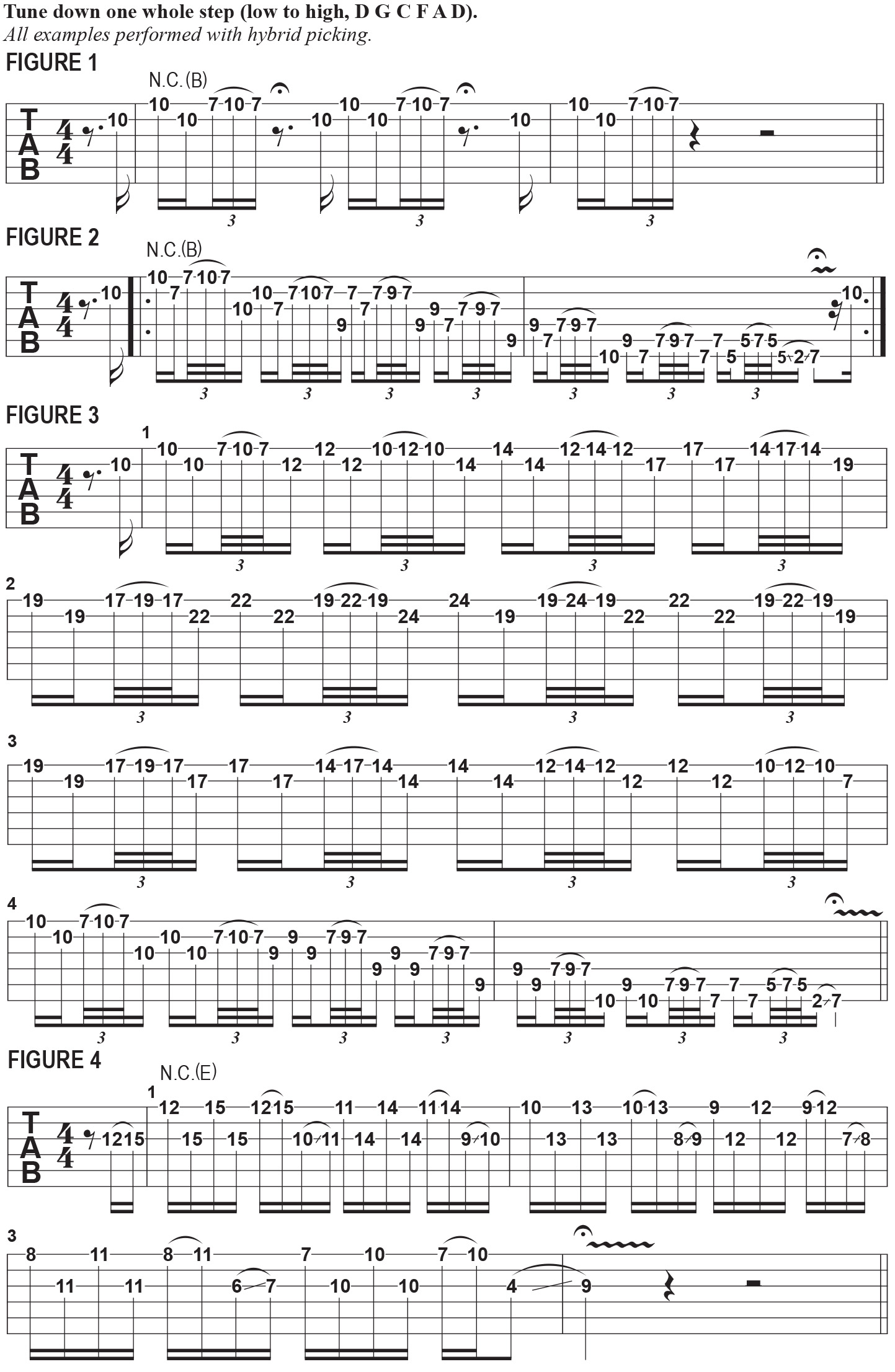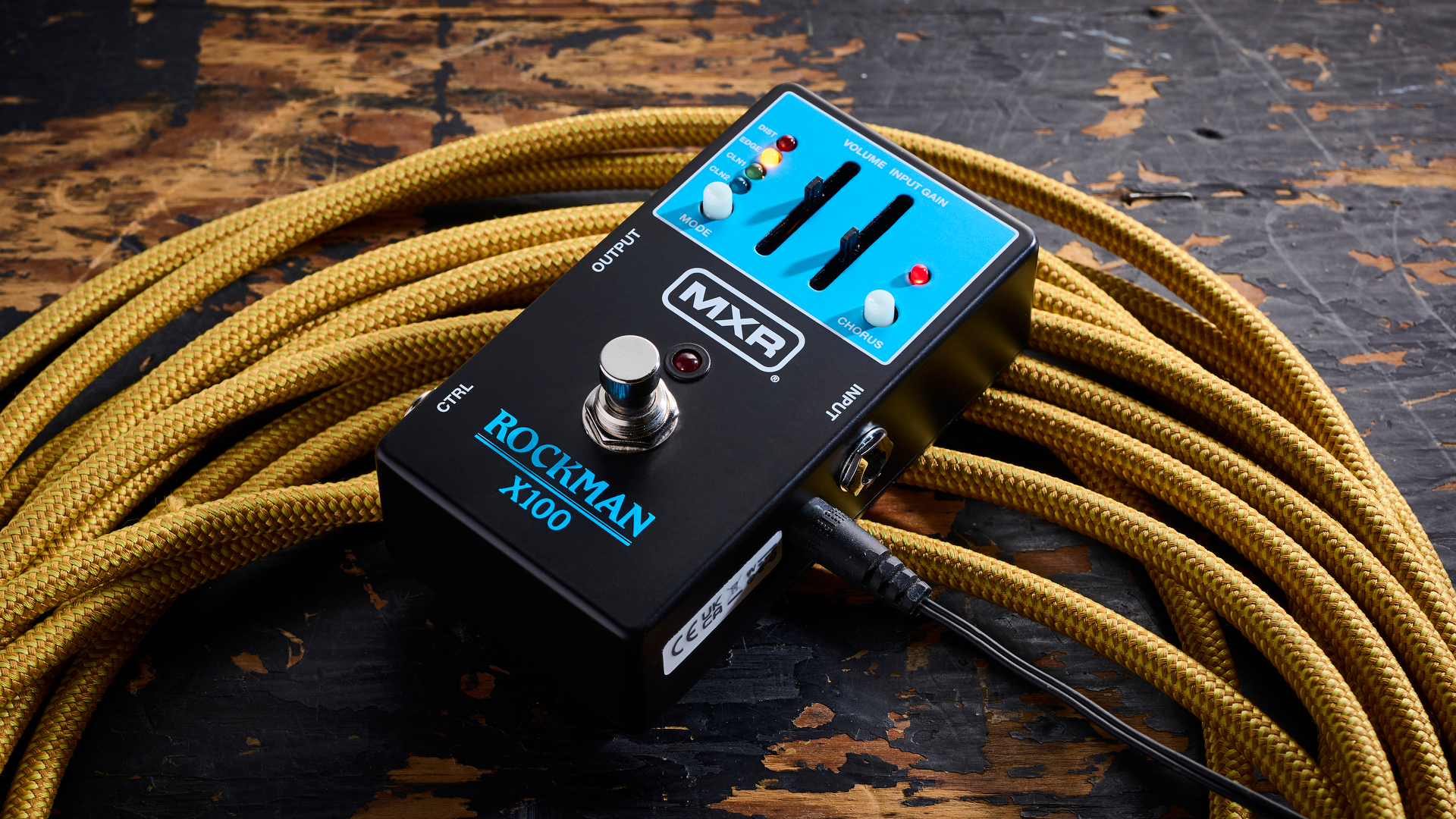More on Exploring Country-Style “Chicken Pickin’ ” Techniques in Metal
Last month, I introduced the concept of bringing the country guitar technique known as chicken pickin’ into metal music and metal-style solos.
To review, the technique is performed using hybrid picking, as notes are alternately sounded with the downstroke of the pick followed by an upstroke with a fingertip (typically the middle finger). The fingerpicked upstroke serves to snap the string against the fretboard, and this aggressive, “cluck”-type sound is the reason this technique is often referred to as chicken pickin’.
I presented the technique last month by playing phrases that moved across pairs of adjacent strings, from high to low, starting with a picked downstroke on the lower of the two strings, followed by a fingerpicked upstroke on the higher of the two strings. We’ll now delve deeper into other neat things you can do with chicken pickin’.
I am fascinated with the idea of applying syncopated, drum-like figures to the guitar, and I have found that using chicken pickin’ is a great way to recreate those sounds in a melodic way. One such syncopation is that of two 16th notes followed by a 16th-note triplet, played repeatedly on the downbeat of each quarter note across multiple bars.

FIGURE 1 illustrates this pattern performed on the top two strings, starting with a pick stroke on the B string followed by a fingerpick on the high E string, after which the two techniques alternate throughout the remainder of the figure. Notice that the 16th-note triplet is achieved via a quick hammer/pull between two notes on the high E string.
The next step is to move this concept across every pair of strings in a descending manner, as demonstrated in FIGURE 2: at the culmination of executing the initial pattern on the top two strings, I begin the next sequence on the third and second strings with a pickup into beat two, by sounding the 10th fret of the third string on the last 16th note of the first beat, following each quick hammer/pull. I then apply this same “jump start” to each new string pair as I progress through the entire pattern. The scale upon which these phrases are based in the B blues scale (B D E F F# A).
Another effective approach is to remain on a single pair of strings but move up and down through all of the fretboard positions of minor pentatonic. In FIGURE 3, I begin with the same phrase that kicks off FIGURES 1 and 2, but I immediately shift from seventh position up to 10th position on beat two to sound the notes associated with B minor pentatonic (B D E F# A) in that position. This is followed with shifts up to 12th, 14th, 17th and 19th positions.
All the latest guitar news, interviews, lessons, reviews, deals and more, direct to your inbox!
And finally, yet another cool twist is to use non-adjacent strings, as shown in FIGURE 4: here, I remain on the third and first strings, and progressively descend the fretboard in a chromatic, one-fret-at-a-time manner.
Now that you have the basic idea, try devising your own chicken-picked phrases and solo ideas.
